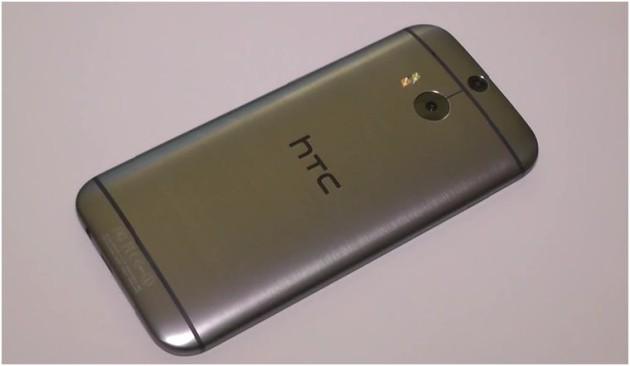
It’s hard to believe that it’s already been a year since the HTC One was debuted. After a long string of phones that failed to impress the masses, the HTC One was a truly saving grace for the Taiwanese company last year. The One excelled in both design, software design, and performance. However, like all tech, the HTC One could only hold on to that glory for so long without needing a refresh to keep up with other technology being showcased. With Samsung just having released their Galaxy S5, it was time for HTC to show how the One line would continue to stay relevant.
Without changing too much about the phone, the All New HTC One, or the HTC M8, was able to get the thumbs up from yours truly.
I’ll start off by saying that I’m not all that impressed by the rounded corners of the device. If I had to choose between designs, the original HTC One still has my vote there. I’m not sure there’s any real science behind it, it’s just a personal preference - but it’s one that isn’t hard to get over. The other improvements made in the M8 are what make it such an impressive upgrade from the M7.
We should probably rehash some of the official specs, just so we can get an idea of what we’re working with here. The HTC M8 features a 2.3GHz quad-core Snapdragon 801 processor, a 5-inch Super LCD 3 display that uses a full 1080p resolution, 2GB of DDR2 RAM, 16 or 32GB of internal memory with microSDXC support up to 128GB, 4-megapixel “UltraPixel” dual-lens “Duo Camera”, 5-megapixel front-facing camera, 2,600 mAh battery, Sense 6, BoomSound, more sensors for gesture-based navigation, running Android 4.4 KitKat and offered in three different colors: Glacial Silver, Amber Gold, and Gunmetal Gray.
So really, while the two may look extremely similar on the outside, the two devices are pretty different on the inside. Now, let’s talk about why some of these improvements are so great.
First and foremost, the fact that HTC actually added microSD card support is probably the thing that impressed me the most. Most companies are moving towards removing the option to further promote the use of cloud storage, but I’m sure I’m not the only one who thinks that there isn’t a reason that cloud storage, internal storage, and microSD cards can’t work together on one device. If Samsung and HTC can do it, I’m pretty sure other companies can too. Kudos to HTC for bringing it back.
The second thing worth mentioning is the camera. While HTC opted to keep the 4-megpixel part of their camera, there’s a lot of other changes going on there that are worth noting. The Duo Camera, the same mysterious camera pair that we had been seeing in leaks over the past several months, do have purposes. These purposes are for making your smartphone camera act more like a real camera, with more options in order for you to get that perfect shot. These two cameras together allow for refocusing (similar to Nokia Refocus, a popular app in Lumia devices), as well as background blur and Dimension Plus (a 3D effect). The 4-megapixel UltraPixel actually takes some great photos in my opinion. The only time I could really tell it was a 4-megapixel camera was when I would zoom in. Admittedly, the M8 could have used a megapixel boost, but I won’t complain.
Even the front-facing camera in the M8 is making some serious strides. Most flagships only offer 2-megapixel camera resolution for the front-facing camera. In this selfie-dominant generation, a 5-megapixel camera on the front of a phone is almost droolworthy for selfie enthusiasts. Just imagine how much better Ellen’s Oscar selfie would have looked if it had been taken with an M8 instead of a Note 3!
I do wish that the M8 had stayed at a comfortable 4.7-inch display, because I don’t think that a bigger screen necessarily makes a phone better; however, the M8 managed to stay really close in width to its predecessor, so it’s not really a big deal.
In the end, I feel like the M8 has a lot going for it, and it improved on just the right elements that it needed to. Last year was about impressing, this year is about improvement. If people weren’t swayed by the M7 last year, I’m willing to bet that, especially with the addition of microSD card support (a feature that many claim is exactly why they stick with Samsung), the M8 might just be the phone to make people keep believing in HTC.
Readers, how are you feeling about the M8 now that the specs are official and here? Do you think that the M8 is a worthy upgrade from the M7? Let us know how you’re feeling in the comments below!
Images via Talk Android, CNet